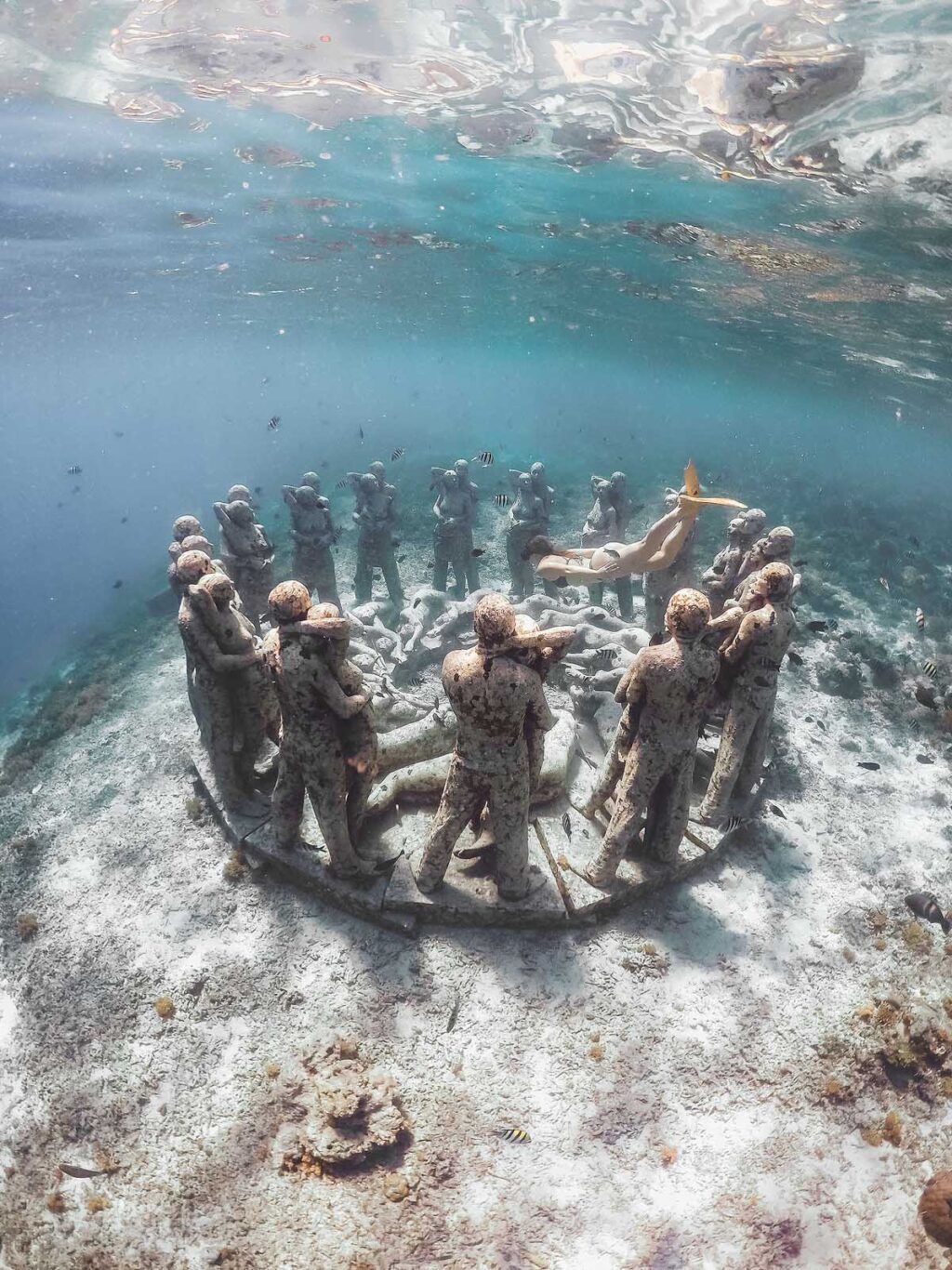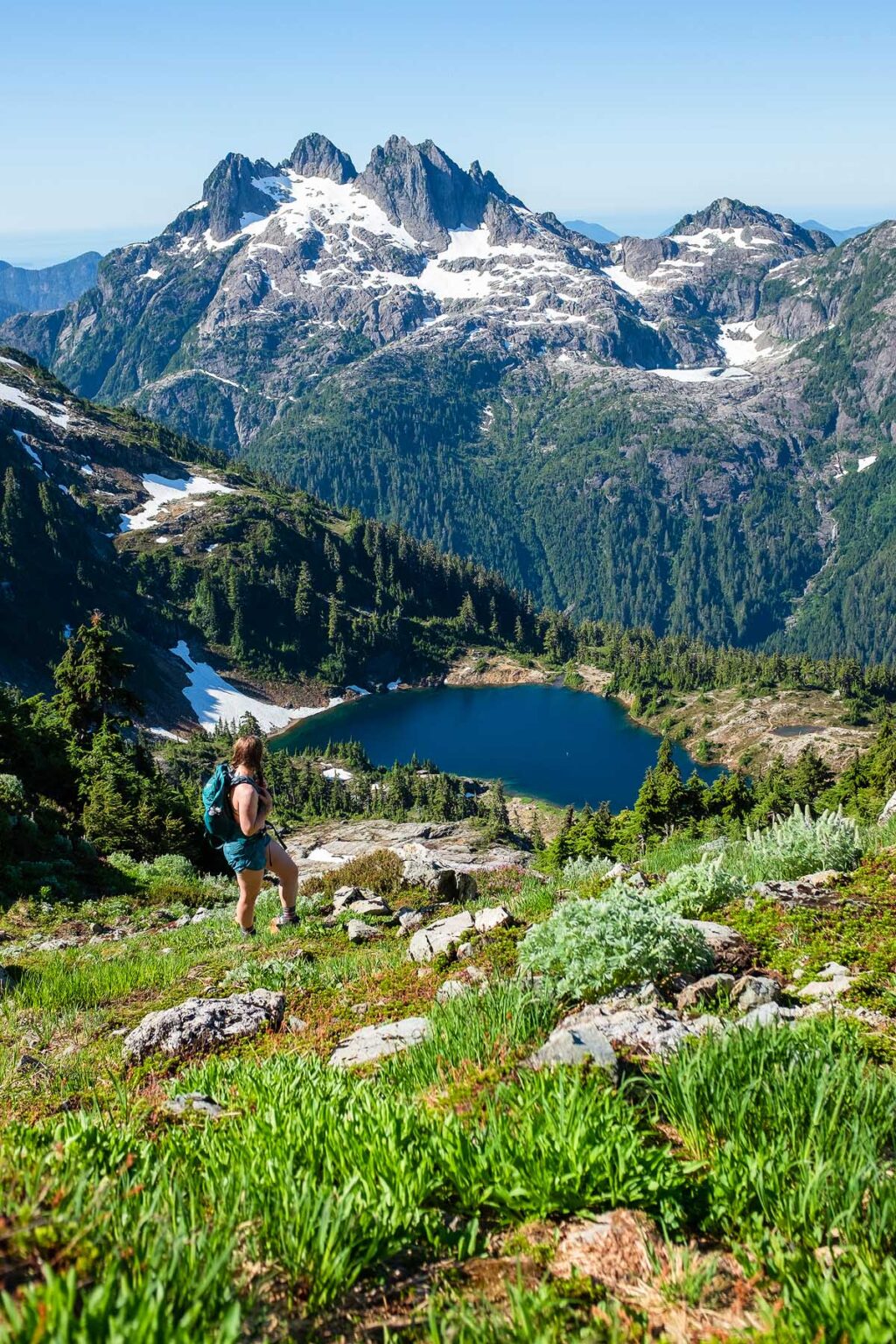This post may contain affiliate links, please see the privacy policy for details.
Looking to plan your next adventure but don’t know where to start? Look no further than these expert trip planning tips! Whether you’re a seasoned traveler or a first-time explorer, these tips will help you create the perfect itinerary for your next getaway. From finding the best flights and accommodations to discovering lesser-known attractions and experiences, this guide has everything you need to know to make your trip planning a breeze. So sit back, relax, and make your dream destination a reality with my comprehensive trip planning tips.

Planning a dream vacation can be an exciting process, filled with anticipation and the promise of new experiences. However, it can also be daunting, as there are many factors to consider and decisions to make. From choosing a destination to budgeting and creating an itinerary, it’s essential to get organized and prioritize each aspect of the trip. With careful planning and the right approach, a fantastic vacation awaits. It’s time to plan your perfect vacation!

Setting Vacation Goals
Check the Travel Advice and Advisories
Before planning your vacation, you must check the travel advice and advisories for your desired destination. This lets you stay informed about any safety concerns, health risks, entry requirements, or other useful information. Consider visiting government or reputable websites to get accurate and up-to-date information.
Decide on the Vacation Destination
Choosing the perfect travel destination can be a challenging task. Evaluate your preferences and the type of vacation experience you desire. Research popular destinations and consider the weather, tourist attractions, culture, and local cuisine. Talk to friends and family, and look at travel blogs and Facebook groups or consult travel agents for recommendations to make an informed decision.
Often, this is one of the most challenging aspects of travel planning! If you have a travel bucket list, look at it and see what you can check off.
Decide the Duration of Your Trip
The duration of your trip is another critical factor to consider while planning your vacation. Will it be a short getaway, a moderately long vacation, or an extended trip?
Your trip length should fall within your budget and available time off from work or other commitments. Consider travel time to and from your destination and any possible layovers.
Identifying Activities and Attractions
Beyond choosing the destination and trip duration, identify and prioritize activities and attractions you would like to experience. Some popular options include:
- Cultural Experiences: Visit museums, historical sites, or local events.
- Gastronomical Adventures: Explore local markets and unique dining experiences.
- Outdoor Activities: Including hiking, biking, or water sports.
- Relaxation Opportunities: Such as spas, beaches, or yoga retreats.
Create a tentative itinerary that includes your top picks and allows for flexibility and spontaneity. This will help ensure you get the most out of your vacation while leaving room for unexpected opportunities.
Taking a guided tour on vacation unlocks authentic experiences you might otherwise miss. Local guides offer insight into their community and culture providing rich narratives that blend history, folklore, and personal experiences. Through their expert knowledge, travelers navigate not only physical landscapes but also the social and cultural aspects, resulting in a deeper, more meaningful connection with the destination.
Alexandrea Sumuel, travel expert at Wander with Alex

Budgeting for Vacation
Determining the Budget
When planning a vacation, it’s essential to establish a realistic budget that covers all your expenses. To determine the budget, consider the following factors:
- Transportation: Calculate the costs for flights, trains, buses, rental cars, or any other transportation required during the vacation.
- Accommodation: Research various accommodation options, such as hotels, hostels, or vacation rentals, and their prices.
- Meals: Estimate daily meal expenses, considering local food costs and personal preferences.
- Activities and attractions: Make a list of activities and attractions you want to visit and include their entry fees or activity costs.
- Preparation expenses: Some expenses need to be accounted for before the trip, such as passport and visa fees, travel insurance, and any necessary vaccinations.
Consider longer trips for international travel, particularly if your family plans to rent an Airbnb or VRBO because you can often find weekly or monthly discounts. Use one location as a “home base” and take day trips to other nearby cities of interest.
Deb Meyer, author of Redefining Family Wealth and founder of WorthyNest,
Once you understand all the expenses, add them up to create an overall budget and allocate a contingency fund for unexpected costs.
Cost Optimization Tips
Budget-conscious travelers can still enjoy a fulfilling vacation by using these seven cost-optimization strategies to save money:
- Book in advance: Secure better deals on transportation and accommodation by booking well in advance.
- Travel during off-peak seasons: Plan your vacation in the off-peak season to save money by taking advantage of lower prices and fewer crowds.
- Compare prices: Use price comparison websites and apps to find the best deals on flights, accommodation, and activities.
- Leverage credit card rewards: Plan a trip where you can redeem rewards points or travel-related bonuses from credit cards to save on costs.
- Eat like a local: Opt for local cuisine at smaller restaurants or street food vendors to save on food costs.
- Utilize free attractions: Many cities have free attractions, such as parks, museums, or walking tours, that provide a memorable experience without breaking the bank.
- Book a suite or vacation rental with a kitchen: Saving money is surprisingly easy by cooking meals instead of eating out. This option is excellent for families, large groups, or solo traveling.
Credit card rewards are a great way to fly for free or cheap. Cash back cards are a starting point, but overall a slower way to build rewards. Sign up bonuses are much more lucrative but there are more pitfalls (managing credit cards responsibly, not overspending just to meet a sign up bonus which negates the benefit, cancelling the card before getting hit with future annual fees if any, and other little quirks). I haven’t paid for a flight since 2017 and leveraging various credit card rewards and strategies is how I did it.
Jonathan Grannick at Wonder Wealth (a financial adviser for travel lovers)

Planning the Itinerary
When planning a vacation, creating a well-organized itinerary is essential. It helps keep the trip structured, maximizing your time and enjoyment at each destination.
Researching Schedule
Before diving into the specifics of your travel itinerary, getting a general overview of your destination is essential to help plan the best stay possible. Consider the following three steps when researching your trip schedule:
- Duration of stay: Determine the length of your vacation and how much time you’ll have to spend at each destination. For instance, if you have a week-long vacation, you may want to focus on exploring just one or two places in depth.
- Local events: Research any local events, festivals, or celebrations during your stay, which can help determine which days are best for visiting specific attractions.
- Peak season: Identify the peak travel season and whether it aligns with your travel dates. This may impact your itinerary due to potential crowds and higher costs.
Arranging the Daily Activities
Once you have a general understanding of your travel schedule, it’s time to plan the daily activities for your trip. Keep the following four tips in mind as you create your daily itinerary:
- Prioritize: List must-visit attractions and activities and prioritize them based on importance and location. This will help you make the most of your time and ensure you don’t miss out on anything crucial.
- Balance: Structure your days with a balance of activities, including sightseeing, relaxation, and opportunities for exploration. This helps prevent burnout and ensures a well-rounded trip experience.
- Travel time: Consider the travel time between each activity or location, and try to cluster activities together based on proximity. This minimizes time spent in transit and allows more time to enjoy your chosen destinations.
- Flexibility: While it’s essential to plan, leave room for unexpected opportunities and last-minute changes. Keep some free time in your schedule to allow for spontaneity, and be prepared to adjust your plans if needed.
Start a Google doc (or a similar document somewhere, like Notes on an iPhone) when you start planning your trip. Put things you want to do on that list as you learn about them from research or recommendations. Once you sit down to plan the day-by-day itinerary you’ll have a solid foundation and idea of the things you want to do.
Mikkel Woodruff, Editor at Sometimes Sailing

Booking Accommodations and Flights
Planning a vacation involves several important steps, including booking accommodations and flights. There are strategies for efficiently and effectively securing your travel arrangements.
Tips to Find the Best Deals
To find the best deals for your accommodations and flights, consider the following:
- Sign up for newsletters and alerts: many travel websites and airlines offer special promotions for their subscribers for cheap flights.
- Be flexible with your dates: traveling during off-peak seasons, weekdays, or choosing to fly red-eye can save you significant money.
- Compare prices: use travel aggregator websites like Expedia or Google Flights to compare rates for airlines and accommodations.
If you find a place you like via a larger site (Airbnb or VRBO), see if you can find that same property listed from a smaller, local company. By booking from the smaller local company you can save a lot of money since they didn’t charge the same exorbitant fees.
Todd Bryant at Signature Wealth Partners
Checking Safety and Quality
Ensuring that your chosen accommodations and flights have good safety records and high-quality standards is essential. Here are some tips to help you get the best value for your money:
- Read reviews: check websites such as TripAdvisor or Expedia to find genuine reviews from fellow travelers who have stayed at the accommodations or flown on the airline.
- Check for certifications: look for certifications from reputable organizations like the International Air Transport Association (IATA) or the International Civil Aviation Organization (ICAO) for airlines and certifications like the Safe Travels stamp from the World Travel and Tourism Council for accommodations.
- Visit the official websites: browsing the official websites of the airline or accommodation can provide valuable information on safety procedures, amenities, and quality.

Minimize Travel Risks
Wherever you travel, prioritize safety to make the experience enjoyable and stress-free. To minimize travel risks, follow these steps:
- Register on your country’s Smart Traveler program: By registering with your government’s travel advisory program, you will receive up-to-date information on potential safety concerns in a foreign country. For example, U.S. citizens can enroll in the Smart Traveler Enrollment Program (STEP) here to stay informed of travel advisories. Canadians use this Registration of Canadians Abroad.
- Choose your destination carefully: Consider the current situation of your desired location, including its political stability, crime rate, and the prevalence of diseases. Select a destination with favorable conditions to avoid any possible risks during your vacation.
- Stay informed about the pandemic: Since the situation is continuously changing, it is crucial to monitor updates from credible sources such as the World Health Organization (WHO) here and the Centers for Disease Control and Prevention (CDC) here. Keep track of any guidelines or restrictions that may affect your plans.
- Prioritize well-ventilated spaces: When booking accommodations and planning activities, prioritize locations that offer well-ventilated spaces. This will help reduce exposure to airborne diseases.
- Optimize your travel route: Plan your transportation to minimize layovers and stops in high-risk areas. Direct flights are preferable, as they reduce the number of times you may come into contact with high-touch surfaces and crowds.
- Practice proper hygiene: Regular hand washing with soap and water for at least 20 seconds, using hand sanitizer when necessary, and avoiding touching your face can help minimize the risk of contracting illnesses. Clean and disinfect surfaces, especially in shared spaces such as hotel rooms and rental cars.
- Incorporate flexibility in planning: Uncertainty can affect global travel conditions. Ensure that your travel bookings have flexible cancellation policies, allowing you to adjust your plans if unforeseen circumstances arise. It may be unsafe during forest fires, floods, hurricanes, or similar situations, and local resources can’t support tourism.

Packing for Vacation
Essential Items to Pack
When planning a vacation, it’s important to pack essential items that will make your trip comfortable and enjoyable. Here are some must-haves to include in your luggage:
- Travel documents: Passport, visas, driver’s license, and a copy of important documents (physical and digital copies)
- Health essentials: Prescriptions, medications, first-aid kit, and any necessary vaccination records. I am a Type 1 diabetic and I pack twice as much medication and supplies that I think I will need, just in case. Also, keep these items in your carry on bag in case your luggage is lost.
- Clothing: Pack clothes appropriate for the weather and activities planned, including enough underwear, socks, and sleepwear
- Toiletries: Toothbrush, toothpaste, deodorant, shampoo, conditioner, soap, and any other personal hygiene products
- Electronics: Phone, charger, headphones, power bank, and adapters if necessary
- Financial: Cash, ATM card, credit cards, and a money belt or hidden pouch for security
- Miscellaneous: Snacks, reusable water bottle, travel pillow, and earplugs
Packing Light and Efficient
To ensure you’re packing light and efficiently for your trip, follow these eight tips:
- Create a packing list: A packing list will help you plan what you need and avoid last-minute panic packing.
- Choose the right luggage: Opt for lightweight, durable, and weather-resistant bags that suit the type of trip you’re taking.
- Pack versatile clothing: Select clothing that can be easily mixed, matched, and layered.
- Roll your clothes: Rolling clothes instead of folding them saves space and helps reduce wrinkles.
- Use packing cubes: These can help to keep your clothes organized and make unpacking easier.
- Pack toiletries in a clear bag: This makes it easy to find what you need and speeds up security checks.
- Limit shoes: Only pack shoes that are comfortable and versatile for multiple situations.
- Be mindful of weight: Balance the weight of your luggage to avoid discomfort or extra costs from overpacking.
If l have learned one thing as l age, traveling light is crucial. I don’t have the strength to carry large luggage anymore so a light, easy to manoeuvre carry-on is essential. Adopting a ‘capsule wardrobe’ helps me create numerous outfits with minimal pieces – keeping it neutral, interchangeable and easy to wash ‘n wear.
Margarita Ibbott, travel blogger at DownshiftingPRO
Remember to check the specific baggage requirements and restrictions of your airline, and adjust your packing accordingly.

Download Some Helpful Apps
Planning a vacation can be a breeze with the right apps on your smartphone. To make your trip more enjoyable, several apps can help with various aspects, such as navigation, currency conversion, and even communication with locals. Here are a few essential apps I recommend as one of my best trip planning tips.
Google Translate is an invaluable tool for communication when traveling to a location where the native language is not your own. With features like text translation, image scanning (through Google Lens), and voice translation, it makes understanding and interacting with locals much more manageable. Don’t let language barriers hold you back while exploring new places.
For navigation purposes, Google Maps is a must-have app. Reliable and widely used, the Google Maps app can help you find your way around unfamiliar destinations with ease. It provides real-time traffic updates, public transportation schedules, and even walking routes. The offline maps functionality is particularly useful when you are in areas with limited internet access.
When traveling to foreign countries, use GlobalConvert to keep track of currency exchange rates. With over 160 currencies supported, this app ensures you have the most up-to-date conversion rates at your fingertips. It’s an excellent tool to help you manage your travel budget and avoid overspending.
Time Buddy is a helpful app to stay organized across time zones when planning your vacation. By allowing you to compare various time zones and set up reminders, Time Buddy ensures smooth coordination for booking flights, accommodations, and activities. This app can prevent miscommunication and scheduling conflicts while traveling internationally.

Learn A Bit of the Language
Before embarking on your vacation, learn some basics of the local language with apps like Babbel or Duolingo. Gaining confidence in using common phrases and expressions can help foster better communication and interaction with locals.
Focus on useful phrases: Start by memorizing words and phrases that will be most beneficial during your travels, such as greetings, asking for directions, ordering food, and expressing gratitude. Concentrating on these practical phrases will facilitate smoother communication and make remembering the language easier.
Practice speaking as much as possible: The more you practice speaking the language, the better you will become. Asking friends or coworkers who speak the language to engage in conversations with you can help improve your fluency. Duoling and Babbel are great for practice!
Learn essential vocabulary and verbs: To create simple sentences and express yourself more clearly, understanding basic vocabulary and verb conjugations is key. Focus on familiarizing yourself with the most common verbs and their conjugations and essential nouns and adjectives to describe places, objects, and people.
Cultural competence matters: Being aware of the cultural norms and etiquette in the country you are visiting will not only help you better understand the language but will also allow for more meaningful interactions with locals. Researching cultural nuances beforehand helps prevent misunderstandings.
When we went to Italy for ten days with the kids, we had them use Duolingo, a fun language learning app, for a few weeks before we left. It’s easy to use and focuses on simple phrases that might be helpful during travel. The kids like it because it feels like a game and they get to compete with each other.
Karen Kelly, from Seasonal Cravings

Confirm Reservations
One of my top trip planning tips is confirming your reservations to avoid any unpleasant surprises upon arrival. This step ensures that your bookings are in place and allows you to reconfirm essential aspects such as dates, rates, and specific requests.
- Double-check your flight reservations by visiting the airline’s website. Make sure you understand 24-hour time. Most airlines permit you to check in 24 hours before, which is always a good idea if you need to pick seats.
- For vacation rental or hotel bookings, log in to the website or contact them directly to confirm the reservation. You may need to provide a confirmation number or other booking details.
- If you have booked a rental car, contact the rental agency to ensure that the reservation meets your expectations, such as the type of vehicle, pick-up, and drop-off locations. Verify the dates and any additional services that you may have requested.
- Additionally, if you have made any special arrangements like guided tours, events, or dining experiences, get in touch with the respective providers to reconfirm your attendance. This is especially important for any activities that may have limited availability or a specific time slot.

During the Vacation
Staying Safe and Healthy
While on vacation, it’s important to prioritize your safety and health. Keep in mind the following tips:
- Get travel insurance: Secure protection against unforeseen medical expenses, trip cancellations, and other potential emergencies. Ensure you learn the facts about travel insurance to have the necessary coverage.
- Stay hydrated: Drink plenty of water, especially in hot climates or after physical activities.
- Eat well: Try local cuisine and maintain a balanced diet by including fruits, vegetables, and proteins.
- Maintain personal hygiene: Regularly wash your hands to prevent the spread of germs.
- Follow local safety guidelines: Obey local rules, pay attention to safety warnings, and always be aware of your surroundings.
Making the Most of Your Vacation
To enjoy your vacation to the fullest, consider these strategies when trip planning:
- Be flexible with your itinerary: Although it’s good to have a plan, be prepared to make adjustments based on unexpected circumstances, such as weather changes or last-minute closures.
- Take breaks: Give yourself time to relax and recharge during the vacation.
- Immerse yourself in the local culture: Attend events, visit museums, and engage with locals.
- Capture memories: Take photos, keep a travel journal, or collect souvenirs to reminisce about your trip in the future.
- Be open to new experiences: Step out of your comfort zone and try activities or foods you may not have considered.

Post Vacation Tips
Managing Post-Vacation Blues
After returning from a vacation, it’s common to experience post-vacation blues. Try incorporating some relaxation techniques into your daily routine, such as meditation or exercise, to combat these feelings.
Create a routine that helps you transition back to your daily life, and set goals for your next vacation to give you something to look forward to. Plan short, enjoyable activities or weekend trips to ease the transition back into daily life.
Sharing Your Experience
Documenting your vacation through photos, videos, and journal entries can help preserve your memories and allow you to appreciate the experience in the future. Share your vacation stories and media with friends, family, and colleagues. Creating a photo album or a slideshow can be an enjoyable way to relive your trip.
Additionally, sharing your vacation planning tips and recommendations with others planning a trip to the same location can be helpful and engaging. Facebook groups are great for sharing your experiences and connecting with fellow travelers.

Frequently Asked Questions
To start your trip planning, decide on your destination and travel dates, considering factors like your interests and budget. Research the destination for information on accommodations, transportation, and activities. Create a rough itinerary, book accommodations and transportation, and handle any necessary travel preparations (e.g., visas, vaccinations).
The amount you should budget for a vacation depends on your personal financial situation and preferences. Consider costs such as flights, accommodations, food, transportation, and activities. Research the costs associated with your chosen destination, create a rough estimate, and add a buffer for unexpected expenses. Adjust your budget and choices, prioritizing activities and experiences most important to you.
When choosing a travel destination, consider your interests, the time of year and weather, budget, safety, and available activities. Additionally, consider any travel restrictions, required vaccinations, or visas needed for entry.
The optimal time to begin the trip planning process varies depending on the destination, budget, and individual preferences. Generally, planning a vacation three to six months in advance allows enough time for researching, budgeting, and booking accommodations and transportation.

Planning a trip can be daunting, but with the right guidance, it can be a fun and exciting process. By following these trip planning tips, you can ensure that your next adventure is memorable. Remember to do your research, be flexible, and keep an open mind to new experiences.

With a little bit of planning and preparation, you can create the perfect itinerary that will allow you to fully immerse yourself in the culture and beauty of your destination. So start planning today and get ready for an unforgettable bucket list trip! Let me know if there is anything else I should add to the vacation planning guide.
You Might Also Like


Bella Bucchiotti
Bella Bucchiotti is a Canadian-based syndicated food, travel, and lifestyle writer, photographer, and creator at xoxoBella. She founded xoxoBella in 2015, where she shares her love for food, dogs, sustainability, fitness, crafts, outdoor adventures, travel, and philanthropy to encourage others to run the extra mile, try new recipes, visit unfamiliar places, and stand for a cause. Bella creates stress-free and family-friendly recipes for weeknight dinners and festive feasts.











1 Comment